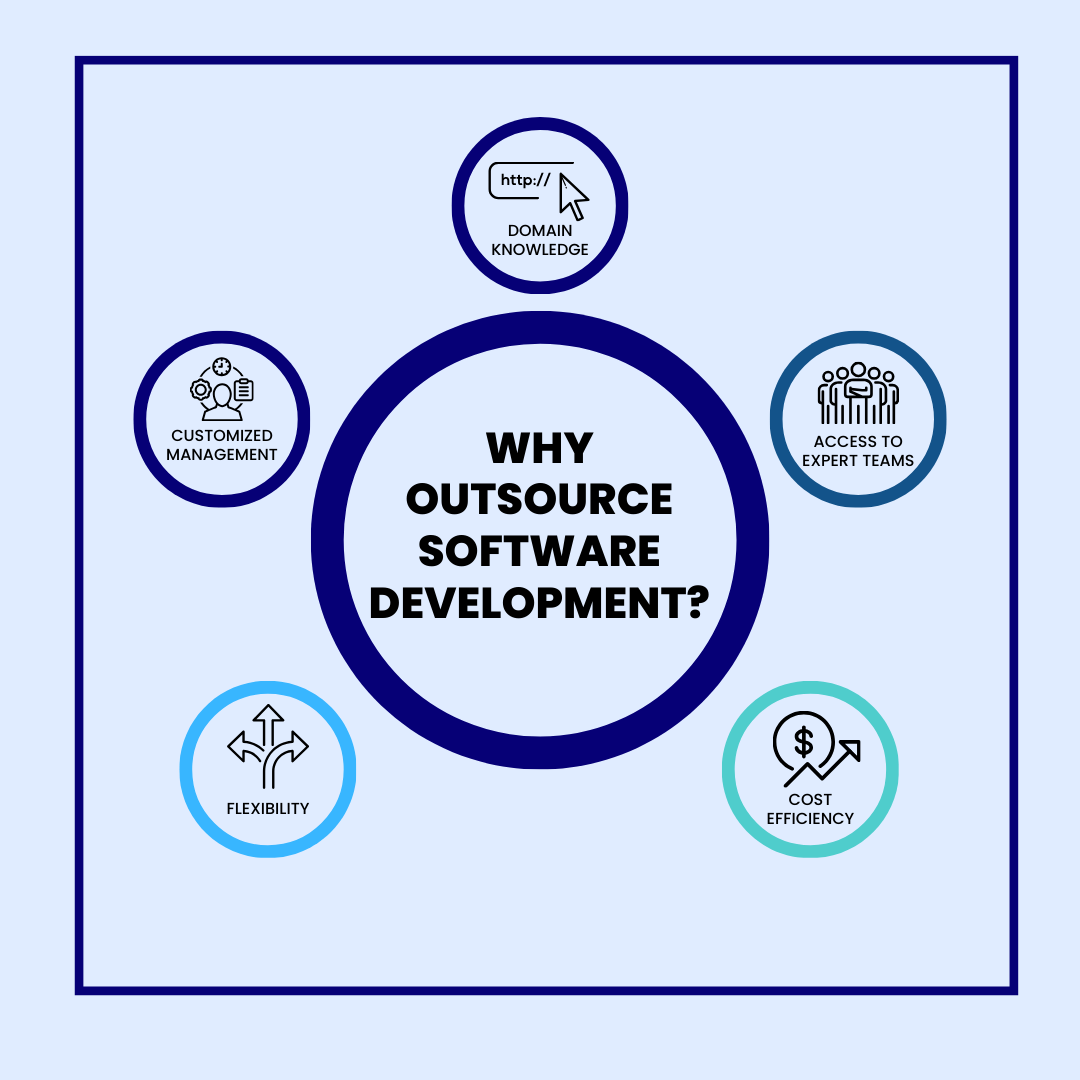
How to Pick Your Ideal Software Development Partner that Fits Your Vision?
Written by Danubius IT Solutions
Selecting the right provider for outsourced software development is a crucial decision that is increasingly challenging due to constantly evolving technologies, customer/user needs, and development standards.
With a multitude of choices out there, pinpointing the ideal match is a task that demands careful consideration, but it's one that can catapult your business to new heights and sharpen your competitive edge.
Why Are Software Development Partners Needed?
For companies aiming to stay ahead of the curve, having a top-rated software collaborator is indispensable. A strong partnership with a skilled software developer transcends mere collaboration; it's about ensuring that your digital infrastructure operates like a well-oiled machine.
In the past, companies relied heavily on in-house teams for product delivery. But with the advent of rapid digital transformation, the role of such partners has evolved: they’re no longer just a support system that lightens the workload but are vital contributors to driving innovation, expanding service offerings, delivering projects on time, and significantly improving customer experiences.
With a development partner that aligns with your company's vision and objectives, you can open the door to a world of innovation and flexibility. This step will help you redefine the way your business leverages technology to grow and succeed.
Why Outsource Software Development?
Outsourcing software development comes with multiple benefits:
-
Access to Expert Teams: Outsourcing connects you with highly specialized teams in cutting-edge technologies, providing deep technical expertise. This helps in not only matching but exceeding industry standards, ensuring your software solutions are both advanced and efficient.
-
Domain Knowledge: Outsourced teams offer a wealth of domain knowledge, understanding various agile methodologies to deliver high-quality, business-aligned software. Their diverse experience brings valuable insights, enhancing your project beyond basic coding.
-
Cost Efficiency: Outsourcing reduces operational costs significantly, eliminating the need for in-house infrastructure, resources, and technology. It offers a cost-effective alternative to maintaining a full-time team, without compromising on quality, thereby optimizing business productivity.
-
Flexibility: The flexibility of outsourcing allows for scaling your team according to project demands. This adaptability is essential in a dynamic business environment, ensuring you have the right team size for every stage of your project.
-
Customized Management: A dedicated project manager in an outsourced setup efficiently bridges the gap between your business goals and the development team. This ensures streamlined project management and progress, freeing you to focus on core business activities without the intricacies of software development oversight.

Understanding Outsourcing Options and Technologies
Selecting the right outsourcing model is essential to ensure the success of your project. Each model has its own set of advantages and challenges:
-
Staff Augmentation: Ideal when you need to expand your existing team temporarily. This option allows you to add specific skills to your team without the long-term commitment of hiring new full-time employees.
-
Project-Based Outsourcing: Best suited for projects with a well-defined scope and timeline. This model allows you to hand over the entire project to the outsourcing partner, which can be especially beneficial if your in-house team lacks the time or specific expertise. Estimated prices of multiple possible vendors can be compared and used as a decision argument.
-
Onshoring: Involves outsourcing within your own country. The primary benefits are shared time zones, cultural similarities, and easier legal compliance, but it may come with higher costs compared to offshoring.
-
Nearshoring: Outsourcing to a nearby country, typically within the same time zone or a similar cultural context. It strikes a balance between the cost-effectiveness of offshoring and the convenience of onshoring.
-
Offshoring: Outsourcing to a distant country, often with significant cost savings. Challenges can include differences in time zones and cultural barriers, but advances in communication technologies have made it a viable option for many businesses.
-
Hybrid Model: Combines elements of onshoring, nearshoring, and offshoring. It's a flexible approach that can be tailored to the specific needs of your project, offering a balance of cost, convenience, and quality.
A Step-by-Step Guide for Choosing the Ideal Development Partner
With a sea of options available, making this crucial choice can be daunting. To demystify the process and set you on the right path, our guide below can help you make an informed decision, ensuring your chosen partner aligns well with your business vision and goals.
-
Evaluate Company Size and Working Patterns
-
Alignment with Your Business: Partnering with a firm that resonates with your business's size and mission is vital. A large corporation might overshadow a startup's needs, while a too-small firm may struggle with the demands of a large enterprise.
-
Portfolio Analysis: Scrutinize their past projects to gauge their expertise and success in similar domains. A diverse portfolio often indicates a wealth of experience, but relevance to your specific industry or technology needs is key.
-
Process Adherence: Ensure they follow structured software development processes. This includes their approach to project management, agile practices, and their adaptability to changing requirements.
-
Client Testimonials and Reviews
-
Online Reputation: Platforms like Clutch, G2, or even LinkedIn provide insights into the company’s performance and client satisfaction. Look for consistency in positive feedback and how they handle any negative reviews.
-
Network Feedback: Tap into your professional network for firsthand accounts of experiences with potential partners. Personal recommendations or warnings can be invaluable.
-
Clarify Your Project Needs
-
Define Goals and Requirements: Clearly articulate what you want to achieve with your project. This includes both functional requirements (what the software should do) and non-functional requirements (e.g., security, scalability, load handling).
-
Consult a Business Analyst: If you're unsure about your project scope, a business analyst can help translate your business needs into technical requirements, ensuring you and your potential partner are on the same page.
-
Project Timeline Considerations
-
Realistic Timelines: Set realistic expectations for project completion, considering the complexity and scale of the project. Rushed timelines can lead to poor quality, while too lenient schedules may inflate costs.
-
Phased Approach: Consider breaking the project into phases with milestones. This approach helps in monitoring progress and aligning ongoing work with business goals.
-
Budgeting
-
Transparent Budgeting: Establish a clear budget upfront, focusing on achieving the best quality within your financial constraints. Remember, the cheapest option isn’t always the best in the long term.
-
Explore Pricing Models: Understand the different pricing models the partner offers:
-
Fixed Price: Best for projects with well-defined scopes where changes are unlikely.
-
Time and Material: Suitable for projects where scope may evolve. It offers flexibility but requires careful monitoring to keep costs in check.
-
Dedicated Team: Ideal for long-term projects needing a team fully dedicated to your project. This model resembles having an in-house team but without the overhead.
-
Offshore Development Centers: Opt for this if cost-efficiency is a priority and you’re comfortable managing remote teams.
Questions to Ask Your Prospective Partner
Before sealing the deal, asking the following key questions will help you see how well you and your potential partner could work together:
-
“Can you walk me through your software development process?”
-
“What's your experience in our industry?”
-
"Can you share some success stories or case studies?”
-
"What agile methodologies do you use?"
-
"What are your preferred programming languages and why?"
-
"How do you ensure timely project delivery?"
-
"What quality assurance practices do you follow?"
-
"How will we communicate throughout the project?"
-
"What makes your services unique compared to others?”
Finalizing the Partnership
After evaluating potential partners, conduct interviews and assess their technical expertise, communication style, and understanding of your project requirements.
-
Thorough Interviews: Assess not only their technical capabilities but also their problem-solving skills, creativity, honesty and cultural fit with your organization.
-
Check References: Speak with previous clients to get a better understanding of the partner’s strengths and areas for improvement.
-
Discuss and Agree on Key Terms: This includes project scope, deliverables, timelines, payment schedules, confidentiality agreements, and protocols for handling changes or unexpected challenges.
-
Draft and Review the Contract: Ensure that all discussed terms are clearly outlined in the contract. It’s advisable to have legal counsel review the contract to safeguard your interests.
-
Establish Communication Channels and Protocols: Agree on regular check-ins, progress reports, and the preferred mode of communication to ensure smooth collaboration.
Once you’ve found the right fit, formalize the partnership with a clear contract.
Ready to Pick Your Partner?
As you can see, choosing the ideal development partner is a critical decision that can significantly impact your business’s digital trajectory.
At Danubius IT, we understand the gravity of this choice. Our expertise in cutting-edge software solutions positions us as an excellent outsourcing partner to help you with a wide range of projects, from legacy modernization to developing massive customer-facing systems. Contact us, and let’s discuss how we can transform your software vision into reality.
Interested in IT solutions tailored to your business? Contact us for a free consultation, where we'll collaboratively explore your needs and our methodologies.

.png?alt=media&token=6167f0c8-f152-4da9-8498-30e472899817)
.jpg?alt=media&token=7f5e6011-729e-4df8-bbe4-e97d3ab885a8)

